This page is an automated translation of /nl/naturalfood.html and has not been reviewed yet.
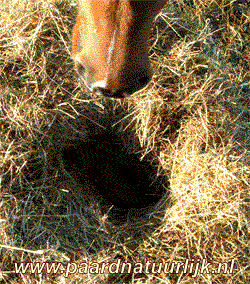
- Balanced nutrition?
- Anthropomorphism, Wet Monkeys and Big Business
- Cellulose vs Starch
- Food Supplements
- Eating Posture
- Grass
- Living without concentrates
- Healthy food?
- The book "Horse Naturally"
Balanced nutrition?
Is "horse nutrition" still a serious topic? If you can believe the feed manufacturers, every brand of nutrition is "balanced". Buy a bag of bix and you're done, because the manufacturer has already thought everything out for you and made sure that the bag contains an optimal ratio of nutrients. The optimal ratio has been devised by a university, a veterinarian with a good reputation, sometimes even based on the horse's characteristics! It must be good!
"Natural Ingredients"
Most manufacturers claim that their horse feed is made from "Natural Ingredients". But what exactly is that? A leg of lamb is natural food for a lion, and ragwort is natural food for the cinnabar moth. Despite their natural origin, both types of food are less suitable for horses. How natural are mueslis composed of "natural ingredients" actually for horses?
It is easy to reason that this cannot possibly be true: Power consists of several components. Fats and carbohydrates provide the energy, proteins provide the tissue structure. A horse that works hard consumes perhaps three times as much energy as a horse that is dozing in a box all day, and thus requires three times as much energy. But that same horse does not need three times as much protein. Proteins are only for tissue building and will hardly differ between the two horses. If you feed one horse three times as much as the other horse, either one horse gets too little protein, or the other horse too much! Balanced nutrition does not exist for this reason alone: the energy requirement varies per horse and depends on the amount of exercise, while the protein requirement hardly varies. A "balanced" ratio between fats, carbohydrates and protein does not exist anyway, and the same applies to the other nutrients.
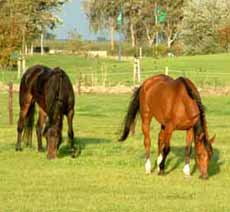
If you strive for a healthy diet, you must of course first know what is natural for a horse. Fortunately, there has been a great deal of research on wild horses (including escaped domestic horses and their descendants) over the last decade, especially in America. (See also our page on Wild Horses .) Most striking is that wild horses (../onderzoek/wild.htm) more than half of the day busy with ... eating!
| Wild horse | Stalhorse |
|---|---|
|
|
Anthropomorphism, wet monkeys and big business
You probably already know "Big business", but do you also know what anthropomorphism is and what we mean by wet monkeys ?
Anyone who walks into a pet food store can immediately see it from the gigantic variety of horse feeds and nutritional supplements: Horse nutrition is big business. The manufacturers call out the loudest that their product is the best, most complete and natural, and that you are doing your horse terribly short if you do not buy their product.
Tasty is healthy?
Surely you buy the tastiest food for your horse? But if we were to feed children according to this criterion, we would only feed them ice creams and candies. Children eagerly gobble up this treat, so it will be good for them. Proteins, carbohydrates and fats are already in abundance, and if we also add all the vitamins and minerals, then they will not be short of anything, will they? Could we call that "a balanced diet"?
The consumer is only too happy to swallow this for sweet cake. It is a well-known saying that you cannot live on grass. Moreover: Everyone feeds their horse concentrate anyway, so it will be necessary for something. In addition, the sight of horses eagerly gobbling up their bowl of concentrate is very satisfying.
So both sellers and consumers have reasons to maintain this image, and horses are fed day-in, day-out with food that they don't need and is actually not that healthy for them at all ...
What!? Is concentrate unnecessary and not so healthy? Indeed. If you have been feeding your horse with concentrate for years in the belief that this is good for him, you may not like to hear that it is actually not that good for him, but in the interest of your horse, we will make an effort to explain why this is so. There is not much room on this page to do that in great detail, so we will limit ourselves to a few essentials. (In the book Horse Naturally we will of course go deeper into this matter.)
Is concentrate unnecessary and not so healthy? Indeed. If you have been feeding your horse with concentrate for years in the belief that this is good for him, you may not like to hear that it is actually not that good for him, but in the interest of your horse, we will make an effort to explain why this is so. There is not much room on this page to do that in great detail, so we will limit ourselves to a few essentials. (In the book Horse Naturally we will of course go deeper into this matter.)
Cellulose versus starch
The comparison roughage versus concentrate essentially boils down to the comparison cellulose versus starch. The "energy substance" in roughage is cellulose, while in concentrates the main energy supplier consists of starch (or even sugar). Let's compare these two energy sources:
Cellulose as an energy source
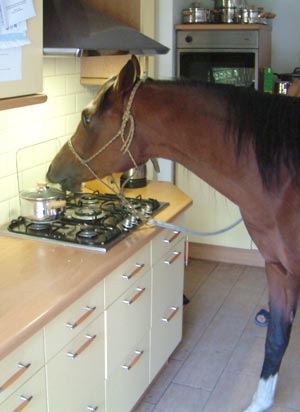
Ridiculous? Many people fall prey to anthropomorphism, they act as if horses are a kind of people: they feed their horse quick snacks, at fixed eating times, preferably from a tray that is suspended at table height.
In reality, horses want to take 14 hours to eat, in a slow continuous stream, nicely from the ground so that they can stand relaxed ...
Cellulose is the material from which the cell walls of plants and trees are made. It is hard and firm, and the digestive system of animals is totally unsuitable to digest it on its own. The only multicellular animals that can digest cellulose are termites. For example, we humans cannot do anything with grass as food: it is not for nothing that, despite global food scarcity, grass does not appear in any menu.
Yet there are clearly animals that do know how to use grass as a food source. But these animals do not digest the grass independently, but with the help of microorganisms that live in their digestive system. To make this possible, special adaptations are required in the digestive system: one species resorts to rumination, the other has developed several stomachs with separate processes. The horse is also fully equipped to digest cellulose, but has developed a fairly unique way of doing this: it does not ruminate, it does not have multiple stomachs, but it has expanded its colon and appendix enormously and transformed it into a fermentation vessel in which millions of micro-organisms break down the cellulose into volatile fatty acids that are readily absorbable for the horse. As a bonus, the micro-organisms also produce numerous vitamins and proteins that the horse cannot synthesize itself. It looks like a kind of built-in herb garden. Oh yes, fermentation is also a process in which an enormous amount of heat is released, heat for which the horse does not have to use its energy reserves.
In order for the fermentation process to run smoothly, it is necessary that the food is administered not per portion, but in a slow, steady stream. In nature, this works well by itself: the horse is a grazing animal and spends 60% of a day (2 pm!), Spread over the day and night (!), Grazing, constantly consuming small amounts of food.
Starch as an energy source
Starch is a collective term for the medium carbohydrate chains from which grain products, rice, potatoes, pasta, etc. are made. Man is a typical starch eater: Our entire digestive system is geared to digesting starch. Cereal products, rice, potatoes, pastas, are therefore an important part of the daily menu in almost every culture.
Celts
There are indications that the Celts already came up with the idea of feeding horses grain products. But is that also good? It was a time when skulls were also drilled "to let evil spirits escape," and it was the same people who came up with the weird idea of hammering iron under a living animal. If you don't feel like having a hole in your skull because you have a headache or a bloodletting because you are a little nervous, why expose your horse to outdated ideas from the same era?
Our ancestors who wanted the horse to work at least 8 hours a day had the problem of how to get enough food in an animal that actually needed at least 14 hours to absorb that food. Because starchy products are so important and easily digestible for humans, our ancestors, unhindered by sufficient anatomical knowledge, thought that this energy-rich food for horses would also be good. The "concentrate" was born. (The reason for starting with concentrate was not that there are things in concentrate that the horse cannot do without, but to be able to stuff enough food into the horse in a shorter time. So concentrate is actually fast food ... )
Using grain products as food for horses worked to an extent, but it did come with a price ...
Starch and cellulose?
| Content of the blind and large intestine in% of the digestive system | |||||||||
|---|---|---|---|---|---|---|---|---|---|
| |||||||||
|
To give an impression of how unique the digestive system of the horse is: In humans, the appendix and large intestine make up 17% of the content of the digestive system, in a horse this is no less than 61%. And this is not because the horse is a herbivore, because a cow, for example, does not exceed 11%. Humans are typical "small intestine digesters", but horses are clearly equipped for a different kind of digestion. Cereal products are not the most suitable food as they can only be digested in the small intestine ... |
The horse's unique adaptation to utilize cellulose worked magnificently ... until the moment when humans began to interfere in feeding the horse.
The digestion of starch and cellulose is only compatible to a limited extent. Starch conversion takes place in the small intestine, but the horse has too limited an amount of enzymes to handle a lot of starch at the same time. What is not digested in the small intestine ends up in the large intestine, where it kills the microorganisms that have to digest cellulose. There are other organisms in its place that know what to do with the starch, but cannot do anything with cellulose. Besides the fact that the horse is no longer able to get enough energy from grass and hay ("you see, without concentrate he will lose weight") he also lacks the vitamins that would otherwise be made by the micro-organisms. Those vitamins must now suddenly be in his diet, otherwise he will get shortages. The horse has now, through the concentrate, become dependent on the concentrate ...
Fats or carbohydrates?
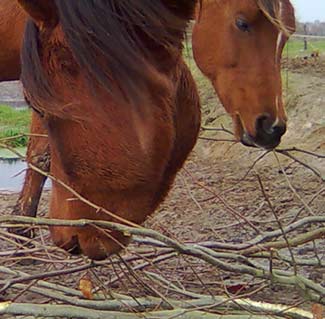
Roughage versus concentrates can also be translated into fats versus carbohydrates. Although cellulose is technically a carbohydrate, it is absorbed by the body as fat. This is because the cellulose cannot be degraded by the horse, but by the micro-organisms in the blind and large intestines. They turn it into volatile fatty acids, which the horse can absorb again. Starch and the other carbohydrates, on the other hand, are broken down into glucose (simple carbohydrate) and absorbed into the blood in that form.
When a horse, as naturally intended, mainly uses cellulose as a food source, then fat is the largest energy supplier. Its sensitive carbohydrate metabolism is hardly burdened by this. When the horse is fed concentrate, the energy enters its body as a carbohydrate. However, there are increasingly strong indications that the horse cannot handle a large amount of carbohydrates so well. Laminitis is a typical consequence of too many carbohydrates, as well as insulin resistance. Two conditions that do not or hardly occur in a horse that only uses cellulose as an energy source. It also strongly seems that allergies such as summer eczema have something to do with a disturbed carbohydrate metabolism.
The way the horse's muscles use energy also depends on the nature of the energy source. In a horse that mainly receives carbohydrates, the muscles will optimize for a more short, but fierce burn. The result is a horse that reacts "hyper" but quickly becomes exhausted (recognizable?), While a horse that uses fat for fuel consumes its energy more evenly and thus has a less nervous attitude but retains its energy for a much longer time.
Carbohydrate combustion can lead to muscle acidification in the absence of sufficient oxygen. However, this acidification is by definition impossible in the combustion of fat because the combustion process here cannot take place in an anaerobic manner.
Everything therefore indicates that carbohydrates are not the best fuel for a horse. His digestive system is clearly not meant for this, and there are all kinds of health concerns about feeding starchy foods. Fats are a better energy source in all respects.
After concluding that fat is the best fuel for your horse, do not make the mistake of providing him with fats or oils directly through his food. The horse is not made to receive it this way; for example, he lacks a gallbladder, which prevents the fat from mixing properly with the digestive juices. The horse should absorb fats as volatile fatty acids, and these are made by the micro-organisms that live in the blind and large intestines and need cellulose for fuel ... So give your horse roughage!
Heat production
Biks, chunks, cereal mixes or muesli?
It doesn't really matter how the product is disguised. All this type of food has the similarity that it is made from grain products, ie starch.
Is there also concentrate that consists of cellulose? Yes, there is, but cellulose takes up quite a bit of space. It is sold under the name "hay" ...
A lot of heat is released during the fermentation of cellulose. The horse's digestive system is its main source of heat. Horses that only receive roughage can therefore easily stay outside in the winter, without a blanket. However, no heat is released during the digestion of concentrates. A horse that gets a lot of concentrate can therefore get too cold more easily.
Feed portion wise
Cereal products are so energy-dense that they cannot be offered in unlimited quantities (Is this actually not enough evidence that this is not the food for which the horse is made?) However, the fact that these products are provided "per portion" does mean that it is horse finishes the ration in a few minutes and then has to do without food for hours. This alone has some consequences:
- The horse's digestive system that is set up for a continuous supply of food should now suddenly work "per portion". The concentration of nutrients released after that portion is very high, higher than is naturally usual. Colic, laminitis (https://www.hoefnatuurlijk.nl/nl/founder.html) and other misery is lurking. This causes many horses to develop a condition known as insulin resistance .
- The intestines have less work on chunks than on roughage, so the intestines produce less heat (see also "Is my horse cold?" ): The horse can get cold.
- Chunks are more compact than roughage, the horse has an "empty feeling" and will soon gnaw on woodwork or drink more water than is good for him.
- The horse, which by nature spends most of the day (14 hours!) With food, is now ready after a few minutes, is getting bored, and the development of "stable vices" is lurking. However, stable vices are not mischief, but stereotyped behavior of an animal in mental distress.
- Scientific research (Willard et al. 1977) has shown that young horses fed pellets not only gnaw wood more often, but also gnaw the manes and tails of other horses more often.
Other drawbacks of concentrates
Furthermore, there are disadvantages to concentrate that have to do with the content and shape:
Molasses
Molasses is a boon for the feed manufacturer: It is cheap, horses like it, you can write a higher energy value on the bag, it is sticky and therefore suitable for gluing chunks together, and the dust sticks to the molasses making it product appears less dusty.
Molasses is a disaster for horses: it has a high glycemic index and therefore poses a high burden on the carbohydrate metabolism, it promotes insulin resistance, it promotes laminitis, it is far too easy to digest, causing hunger again shortly after the meal .
It is difficult to find concentrates that do not contain molasses: does it stick a little or does it have a sweet taste? Then there is molasses in it ...
- Concentrates are made from nutrients that have a high glycemic index, in other words: nutrients that contain quickly absorbing carbohydrates. Cereals, molasses, etc. The glucose level in the blood then increases rapidly, much faster than if the horse were to eat its natural food. When the grains are crushed or extruded, the carbohydrates are released even faster. It's no wonder, then, that more and more horses are suffering from insulin resistance. You can read what that is and what the consequences are on our page about Insulin resistance .
- The teeth, which maintain themselves by eating hard fibers, can no longer do this with the sticky chunks, the molars develop hook, the dentist must periodically use them to remedy this misery
- A horse that receives concentrate has a higher risk of stomach ulcers. Stomach ulcers are caused by the stomach producing more acid, something the stomach will do when the pH is too high. After a meal of hay, the acidity (pH) in the food mash drops more than after a meal of concentrates.
- Concentrated food contains many components that are not on the bag. For example, the pressed and expanded chunks are particularly susceptible to mold and therefore fungicides are added. If you don't believe this: Crush some seeds, possibly boil them, put them in a paper bag and store in a damp stable. How long does it take for the content to be moldy? You will be surprised ...
Also ask the manufacturer for a list of E numbers that are in the concentrate. This will also surprise you ... - The manufacturer will deny it, but concentrates are made from "waste" from the food industry. Cheap raw materials are often used, residual products from other industries. For example, oil is extracted from soybeans, the "waste" that remains is used for the animal feed industry ... The same applies to linseed expeller. This in itself does not have to be a drawback, but these residual products are particularly rich in protein. Actually, there is nothing in it that your horse needs.
- The raw materials for concentrates contain a lot of protein. For the manufacturer it is very cumbersome to remove the excess protein, so they just leave it that way. By not stating the actual content on the bag, but the "minimum guaranteed composition", they avoid difficult questions.
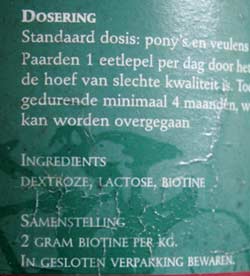
Dietary Supplements
Many people are afraid that their horse will become deficient, a fear that is further fueled by the manufacturers of the wide range of nutritional supplements and power feeds, and mixing anything and everything with the food. But do all those additives, vitamins and the like make sense?
Dietary Supplements
We got an email from a horse owner, she told us to give supplement X from her vet to her (laminitis!) Horse. She wanted to know what we thought about it. The first sight on the site in question was promising: "X is a complementary feed for horses, composed of all necessary vitamins, minerals and amino acids, which work together and reinforce each other's effect."
Of course we do not rely on the sales pitch, but we look further:
Ingredients:
Maltodextrin, Soy protein hydrolyzate, Fructose, Dextrose, Pea protein, Carrot powder, Lecithin, Rapeseed oil, Seaweed powder, Minerals, Alfalfa
Content
72.0 glucose, 16.0% crude protein, 6.5% crude ash, 3.2% crude fat
This substance, recommended by a vet, consists of 72% sugars!
Maltodextrin = type of sugar, Fructose = type of sugar, Dextrose = type of sugar, Glucose = type of sugar
You can of course make a concoction of delicious sweet pudding and add amino acids, minerals and vitamins to it, but that does not make it something healthy! So pay close attention to everything you buy. If you already have it at home, give it a try, if it tastes sweet it is in our opinion unsuitable for horses.
Over millions of years, the horse has become perfectly adapted to eating roughage, and can get everything it needs from it, with the help of the micro-organisms in its intestines. When you start giving supplements haphazardly, you almost always do more harm than good: you disturb the natural balance between the various substances. Unless you have access to a laboratory, and can analyze roughage, as well as the horse's blood levels, providing supplements at your own discretion turns out to be dangerous roulette. In addition, insights from human dietetics are often used to provide supplements, conveniently ignoring the fact that the digestive systems of humans and horses hardly resemble each other.
The manufacturers do not shy away from anything. They produce vitamin C preparations for horses (while these animals simply produce vitamin C according to their own needs, just like cats and dogs, for example), and a well-known horse food manufacturer even saw no objection to a special feed "against tail and mane eczema" on the market, based on the product of Leen Taal .
The cry of manufacturers that their addition is "100% Natural" is also meaningless. Ragwort is 100% natural, but poisonous to your horse. Mercury salts are completely natural minerals, but they are also not particularly beneficial to health. You can only deduce what is "natural" from the animal's eating habits. Most "natural" supplements are thus anything but "natural" despite the promotional text of the marketing apparatus.
Research has shown that more and more horses suffer from a Magnesium deficiency , and one of the causes is precisely the excess supply of minerals, which makes so much calcium available that magnesium can no longer be properly absorbed, despite the wide availability.
Of all vitamins, only vitamin E is actually a critical one because the horse cannot make it itself and it deteriorates quite quickly in older hay. Grass, on the other hand, contains enough vitamin E. If your horse is not on grass, read the page about vitamin E and selenium agree .
If a particular horse does need a supplement at any point for any reason, check out our about page Equilife Formula for Feet . We have selected this product from the countless laundry lists with horse supplements because it is a good product with only healthy ingredients, unfortunately you can hardly say that about any other supplement. Despite the fact that it is not sweet, horses still like it very much. It is based on lucerne, the dose is very low.
Eating posture
Eating attitude ??? Is that important too? Yes, it matters a lot from what height the horse eats. We humans like to eat from a platform, such as a table, so we tend to let animals also eat from a platform. We call that anthropomorphism . We hang hay nets and concentrate is also preferably fed from a container that is hung somewhere on the wall.
However, horses naturally eat their food mainly from the ground. After all, they are grazing animals. What happens if you allow an animal that is fully adapted to eating from the ground to eat from a platform?
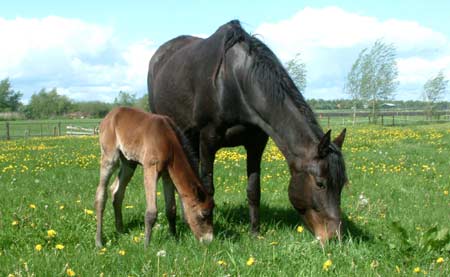
- Esophagus
- The esophagus in horses is designed in such a way that it transports food from the bottom to the top, in other postures the risk of blockage and choking increases.
- Muscles
- The musculoskeletal system is also designed for the "grazing position". The horse can only stand with the head down without having to constantly contract muscles.
- Respiratory system
- When a horse eats from the ground, the respiratory tract goes up. Any dust must be vacuumed against gravity. However, when eating from a platform, dust has free rein. And what about fluids (snot) in the respiratory tract? In the grazing position this runs downwards, so outwards. When the horse eats from a platform, the nasal fluid runs ... to the lungs!
- Teeth
- The lower jaw of a horse is quite heavy. So heavy that when the horse keeps its head down, the jaw drops slightly. Let this be precisely the position where the molars fit together perfectly! But when the horse eats from a platform, the position of the molars is no longer correct and there is a greater chance that the horse will develop hooks on the molars. Or at least just chew his food worse.
- Hooves
- Also for the hooves it is better to let the horse eat from the ground: Horses that often eat from a platform put the weight on the back of the hooves and often develop lower heels. See also Natural Trim .
| In the photo album we have a special section where readers of the website have posted reports and photos of their own specific solutions to feed their horse in a more natural way. See the photo section Equine-oriented housing and food distribution . |
Grass
Roughage, such as grass, is the best you can give a horse. There is usually enough in it, except sodium, but you can supplement that with the help of a lick stone (See also our article on licks ). When in doubt, you can have a crop test carried out, so you know for sure whether your grass contains all the nutrients your horse needs. Our on-line nutrition (*foodcals) provides a possibility to enter your own grass analysis, so that you can see whether your horse contains sufficient nutrients in your roughage in your circumstances.
Yet there is a catch in this healthy grass: Depending on the weather conditions, the grass can make fructan. And it is now known that it is not the protein, but the fructan in the grass that is the cause of laminitis . There is a lot to tell about the fructan, so much that we have made a separate page about it. So take a look at our page about Fructan , to learn what it is and how to avoid it.
The type of grass has less influence than most people think. All grass types contain all the raw materials that your horse needs, so the type of grass does not matter much for that. But the most commonly used grass, perennial ryegrass, does yield a lot but is very high in protein and produces fructan easily. If you have a choice, try offering a slightly more varied grass mixture. If you don't have that choice, just let your horse graze with whatever is available, because every type of grass, including a monoculture, is always much healthier than concentrates.
In addition: Certain weather conditions can lead to the production of fructan. This especially happens when the temperature is quite low while the sun is shining abundantly. Typical weather conditions that often occur in spring, so it is not surprising that laminitis often occurs in spring.
There are more weather conditions that can lead to a high fructan content. That is why we have created the fructan index, which continuously analyzes the weather conditions and provides a risk indication based on this. You can see him on the right. More about this fructan index can be found on the page The fructan index index (*fructaanindex) .
Living without concentrates
So concentrate was once conceived to allow the horse to absorb a lot of energy-rich food in a short time, so that more time was left to work. Anyone who does not work his horse all day *every day does not have to provide fast food. This is still not necessary if you ever ride an endurance competition, because after that one day your horse still has enough time to be able to eat enough roughage.
If you omit the concentrate you will have to deal with a transition phase. The intestinal flora must recover, and that will take some time. During that time, your horse will have some difficulty in making good use of the nutrients from the roughage. You will therefore have to provide your horse with a lot, often unlimited, roughage. Optionally, you can* - temporarily! - *offer your horse extra support by providing a nutritional supplement that is free from grain products, molasses, etc. and is specially made to complement a roughage diet, such as Equi Life F4F . Over time (and that can take up to a year) you will notice that your horse is able to get more and more nutrients from the roughage. He will put on weight, and you can then start limiting his ration.
Another transition effect you may experience is that the horse's muscles have to adapt. They have been optimized to burn carbohydrates, but now they are suddenly served fats. For a while it will seem like your horse has less energy. In reality, your horse has enough energy, but the muscles still have to adapt to use that energy efficiently. Training, combined with a low-carbohydrate diet, will allow the muscles to adapt. In the book "Horse Naturally" we give tips on how to make this transition the easiest.
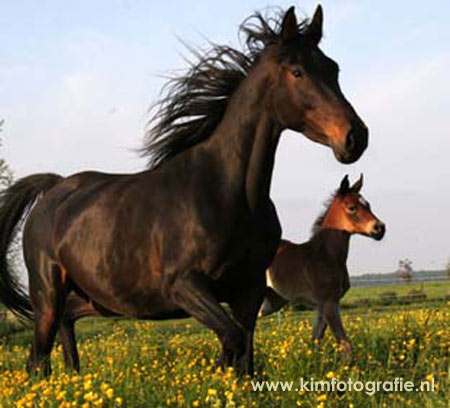
What can you expect if your horse can enjoy a more natural diet?
- More stamina
- Wild horses run 50 kilometers every day on a diet that consists of roughage only. Driving an hour a day in the bucket is not "work", not in the sense that it requires "concentrate", let alone "sports food". Wild horses have the same digestive system as your horse: The blind and large intestines together form a huge storage tank of nutrients and electrolytes. The energy from concentrates is very volatile, but the energy from cellulose is released for a very long time. Even 24 hours after eating, a large portion of cellulose continues to provide energy to the horse. In addition, the horse's muscles will optimize in fat burning instead of glucose burning, which also shows an improvement in stamina.
- Improved health
- Various carbohydrate-related disorders will diminish or even disappear. The quality of the hooves will improve. There is even a chance that conditions such as summer eczema (seme, tail and mane eczema) will disappear. The micro-organisms in the horse's intestines produce vitamins from the B complex, vitamin K, and even some proteins that the horse cannot synthesize itself.
- Weight normalization
- After the transition phase, in which the horse has to get used to its changed diet, fat horses will gain a more normal weight, while horses that are too skinny usually gain weight. Too fat or too thin are usually the result of metabolic disorders, which can be remedied by feeding the horse as nature intended.
- A happier life
- Grazing, preferably more than half a day, is his pleasure and life for the horse. Gnawing at woodwork and the like are frantic attempts to get much-needed cellulose, and on a concentrate-free diet he won't have such a need anymore. Stable vices, which arise from spiritual need because the horse cannot do what it is programmed to do, graze, will diminish. (Have you ever realized why we call this* stable * vices? A horse that lives outdoors and gets enough roughage will not develop this type of disturbed behavior).
- Less neurotic behavior
- Many horses behave nervous. They seem to be full of energy, they hop and they dance, but put them to work just as well and in a very short time they walk on their gums. These are typically the characteristics of a horse that uses glucose for fuel. A horse that uses fats for fuel will behave more like a "diesel engine": a bit quieter, but it will last longer.
- More energy
- Many horses fed concentrate become too fat, after which the roughage ration is reduced. With a lack of sufficient roughage and too long breaks between meals, these horses are always hungry, so that their metabolism goes into low-power mode. The result is a fat, lazy and lethargic horse that does everything to get food. A concentrate-free diet will restore these horses to horses of normal build, with a normal appetite, and a normal amount of energy.
| With concentrate | Without concentrate |
|---|---|
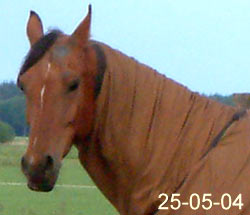 At the time, Baladeika suffered from summer eczema (or seme: tail and mane eczema). She constantly had to put on a fine blanket, otherwise she would rub everything down | 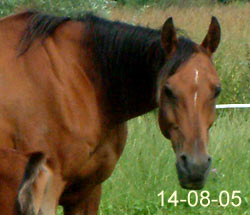 The same horse, but a year after she stopped getting concentrate. The summer eczema has completely disappeared (and has not returned in the following years) |
| This is of course no proof that the concentrate has anything to do with this, but we have now heard from more people that the summer eczema decreased or disappeared after the horse no longer received concentrate. Proven or not, it may be worth trying for yourself. We recommend your findings ... | |
Healthy food?
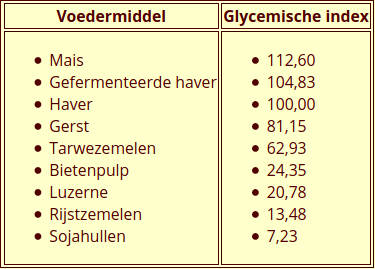
Note: feeds without oats and molasses are not necessarily natural or healthy! Feeds that contain no oats and no molasses are often considered healthy by manufacturers today. The fact that the feed is also mainly composed of grain, barley, wheat spelled, corn, etc. is conveniently "forgotten". Do not read the beautiful marketing story on the packaging, but see what is inside!
See also the glycemic index opposite. The higher the number, the more effect a product has on the sugar peak in the blood. A horse evolved to eat grasses, plants, branches; not on eating concentrated food with a lot of energy. It is therefore obvious that it is wise to stay close to nature and to ensure that you do not feed a horse concentrated energy bombs.
Take the exact numbers with a grain of salt, the researchers themselves indicate that there are quite a few fluctuations, the values do give a very good guideline.
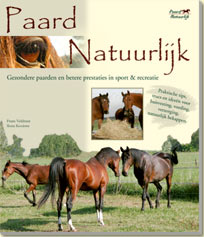
In the book "Horse Naturally" , which is free from feed industry sponsorship, we tell you in greater detail:
- how the horse's digestion works
- how best to feed horses
- how best to switch to a concentrate-free diet
- how to get fat horses thinner
- how to get thin horses fatter
- everything about the herb garden, vitamins and minerals
- how nutrition and training influence each other and the horse's performance
- practical experiences
- tips and ideas
The book contains much more than just nutritional information. For more information see the page about the book "Horse Naturally" . You can also order immediately:
| Er ligt nog niets in je winkelwagen. |